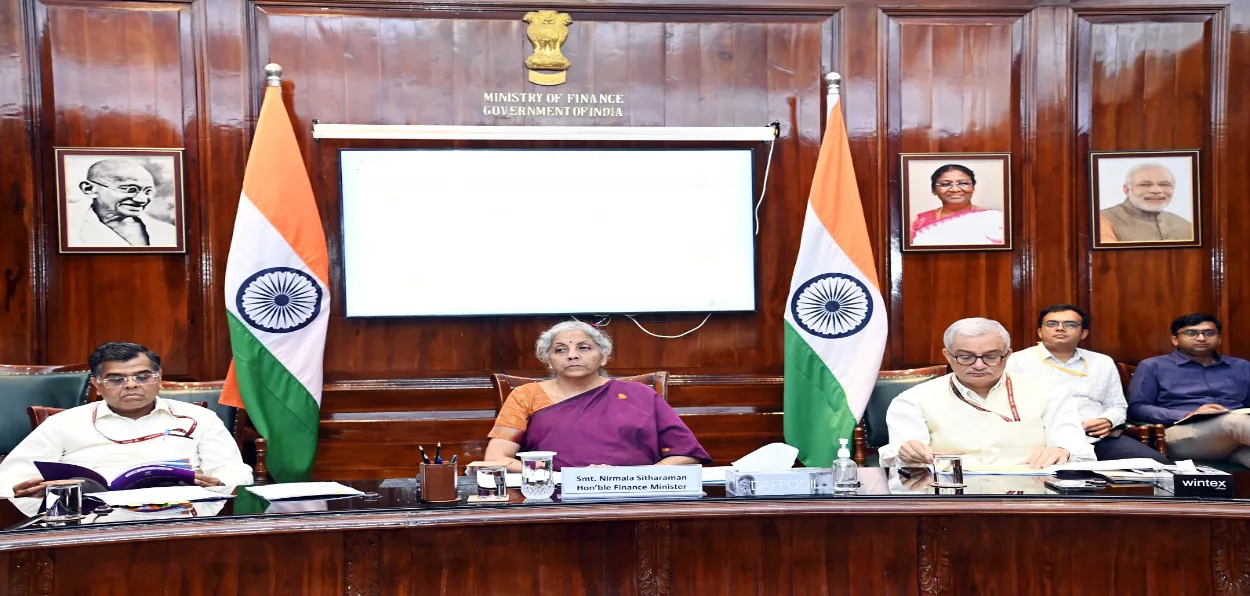
 Sushma Ramachandran
Sushma Ramachandran
The outlook is looking promising for the country to retain the tag of the world’s fastest-growing economy this year. Latest data on revenue inflows and performance of the infrastructure sector is better than expected while reports are also coming in about higher sales of consumer goods in recent months. This has raised hopes that the expectations of a 6.5 percent GDP growth in 2023-24 may turn out to be a reality.
Multilateral institutions like the World Bank, however, are sticking to slightly lower growth estimates. In its latest update on the Indian economy, the Bank has retained its projection of 6.3 percent for the current fiscal. Giving reasons for keeping to its original forecast, it has cited risks from the monsoon deficiency and its evolving impact on prices, the El Nino phenomena, and global supply chain disruptions.
The latest economic indicators, however, are more positive. These include the higher collections of the Goods and Services Tax (GST) for September which rose by ten percent to reach Rs. 1.63 lakh crore. Similarly, there has been an upswing in output of the core sector. These key infrastructure segments recorded a 14-month high of 12 percent in August. The industries covered by the data are cement, coal, crude oil, electricity, fertilizers, natural gas, petroleum refinery products, and steel. The highest growth was in the cement and coal industries which rose by 18.9 and 17.9 percent respectively. The fillip in output is not just on a year-on-year basis but also compared to the previous month, July with a rise of 8.4 per cent.
The core sectors comprise a major chunk of the Index of Industrial Production (IIP), making it evident this indicator will look up in August. The index showed a 5.7 percent rise in July, largely due to the mining and electricity sectors. Manufacturing, on the other hand, had remained at a tepid 4.6 percent.
At the same time, one cannot ignore potential headwinds that could spoil the party in the coming months. These include a rise in world oil prices, sluggishness in exports, and mounting inflationary pressures following a monsoon that has exhibited insufficient rainfall in some areas. The economic recovery also appears to be uneven with two-wheeler sales, largely aimed at the rural market, continuing to grow at a slower pace than the booming passenger car segment. Another issue highlighting slower rural recovery has also come to the fore recently. It has been found that companies in the fast-moving consumer goods (FMCG) sector are continuing to focus on the supply of products in smaller packs. This is to meet the needs of cost-conscious rural consumers, in sharp contrast to the trends in urban areas. Latest reports indicate that there has been an upswing in demand from urban centers. This is manifest in a steep rise in sales of passenger cars, smartphones, and white goods.
As for the external environment, there are challenges on the horizon in the coming months as international oil prices are showing a hardening trend. These have gone up from manageable levels of 75 to 80 dollars per barrel in June to over 90 dollars per barrel currently. India which is the third largest importer of crude oil in the world, relies for over 85 percent of its oil needs from abroad. It will thus have to face a rising import bill in case prices continue to firm up. The cost of buying oil had risen from 121 billion dollars in 2021-22 to 158 billion dollars in 2022-23. It could go up even further if forecasts of oil touching 100 dollars per barrel play out in world markets next year.
This could conceivably also lead to a widening of the current account deficit. The changes in the international oil markets have come at a time when merchandise exports are slowing down. Over the past nine months, these have been contracting in response to the slowdown in demand in major developed economies. This has been balanced till recently by an upsurge in services exports. But this segment is similarly declining now owing to restricted spending by corporate especially in the U.S. as a result of the high interest environment.
Besides, the erratic monsoon this year has created uncertainty over whether demand will rise to the extent needed during the coming festival season. The irregularity in terms of the spread of rainfall could translate into lower yields for rainfed crops like pulses. Food inflation may thus continue for some time and end up constraining rural demand.
Against this backdrop, it is clear that the fast pace of growth recorded in the first quarter – April to June – is not likely to be sustained throughout the year. It had risen sharply to 7.8 percent, much higher than the 6.1 percent recorded in the last quarter of 2022-23. Some moderation is expected in the second quarter – July to September – with expectations being that it would range at around 6.4 to 6.5 percent.
Commenting on growth prospects for the year recently, Chief Economic Advisor, V. Anantha Nageswaran stressed that the country is poised to grow at an average of 6.5 percent right up till 2030. He noted that the rate was being pegged at a lower level rather than 7.5 or 8 percent because the kind of global growth experienced between 2003 and 2008 was no longer being experienced.
ALSO READ: Vanishing women in the workforce is a worrisome trend
As for the current fiscal, surging world oil prices and sluggish demand in overseas export markets will be a hurdle in achieving the target growth. Inflation is also expected to be sticky especially as a patchy monsoon will have ramifications. In other words, there are many hurdles to be overcome before one can confidently predict that growth will touch 6.5 percent.
